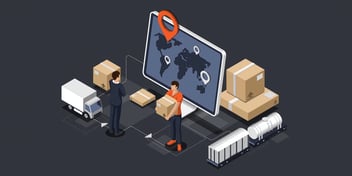The logistics transportation sector is undergoing a massive transformation given the sustainable alternatives and smart solutions available, as well as changes in regulations. To remain competitive, companies must be upgraded with the latest innovations, and technologies. The sector has faced numerous challenges in the last ten years, such as operational efficiency, faster delivery schedules, higher real estate prices, and new regulations.

These challenges are unlikely to go away soon, and as such, industry players, both local and international organizations, must know the trends affecting their businesses and advocacies available. Below are five logistics and transportation trends that everyone should keep up on in 2020 and beyond.
Driver Detention
According to the American Transportation Research Institute in 2019, driver detention and delays at customer facilities are the fourth-ranked issues most industry players are concerned about. ATRI says that drivers reported a 27.4 percent increase in delays of at least six hours between 2014 to 2018. Six or more hours of delay affect the driver's ability to follow the hours of service (HOS) rules and their earnings.
To address the problem with driver detention, some firms are implementing dock appointment scheduling. This solution provides both consignees and shippers complete visibility over inbound and outbound movements and ensures that personnel is available to load or unload as needed.
Industry players can expect driver detention to be a hot topic since more federal agencies such as the Federal Motor Carrier Safety Administration or FMCSA are expected to fill in the gaps in data regarding the effects of drivers. A study on detention by ATRI showed that carriers and truck drivers lose around $1 billion annually due to this problem.
HOS Changes
The FMCSA has implemented the HOS regulation, where CDL drivers can only drive a maximum of 11 or 14 hours following 10 hours of consecutive driving. Drivers are required to take ten straight hours of non-driving duty after hitting the max; otherwise, they cannot resume work. These limits were put in place to reduce accidents caused by driver exhaustion.
However, the FMCSA announced in August 2019 that new changes to the HOS rules are coming. The FMCSA's proposed changes to the rules have been forwarded to the White House, the agency announced in March, but the final changes have yet to be shared with the public. Some of the changes may include the following:
- Letting drivers go beyond the maximum on-time duty by two hours if there are adverse driving conditions.
- Allowing drivers to "pause" their on-duty hours for up to three hours one time so they can plan around weather and traffic conditions.
- Letting drivers use sleeper birth to split into two periods of their 10 hours off-duty hours where the split should be less than two consecutive hours and seven consecutive hours.
Blockchain Technology
Blockchain technology in logistics has the primary function of documenting data via a network of databases on the internet. It has jumped to the top of the list of new technologies available to help the industry and its players become more competitive. Why is this so?
Blockchain technology works by recording data in block series that are chained together and spread across multiple data centers in several copies. This allows the data to become permanent since it's almost impossible to change the information once stored. Data collected and stored can include personal information, agreements, and contracts, to name a few. However, confidential information such as personal identification is kept private, secured, and encrypted.
Blockchain technology in supply chain matters because of the following reasons:
- Allows for quicker payments- Blockchain transactions happen directly between the payee and debtor in a secure manner
- Traceability- The technology can be leveraged for greater visibility over each supply chain process. Walmart has already started using Blockchain since 2018 to improve the tracing of its food products just in case some products pose a health risk.
- Product monitoring- Some products require special handling such as heated or cold storage. Blockchain technology allows for the linking of sensors to Blockchain to determine if the special handling guidelines or conditions are being met.
The industry can expect more uses for Blockchain in its operations in the future.
Autonomous Trucks
Driver retention has always been a problem, and many are worried over the estimated number of driver shortages. Some see autonomous trucks as the solution to the driver shortage. Some truck manufacturers have invested in the research and design of self-driving trucks and have even tested some of them on public roads. It may take a few years more for the industry as a whole to embrace this technology, but many remain optimistic that autonomous trucks will be used for long haul trucking within the next ten years.
Rising Insurance Rates
The ATRI report on Critical Issues in the Trucking Industry has listed emerging concerns of industry players. Third, on this list of emerging concerns is insurance cost or availability, as companies have seen a 17 percent increase in insurance premium costs per mile since 2013. Several factors affect the higher insurance premium, including rising medical costs, equipment repair, higher settlement and jury awards, and greater legal and safety exposure.
Higher insurance rates worry fleet operators as it affects their overall profitability.
Changes in any industry are inevitable. But dealing with developments, especially those affecting operations and profitability while sorting through dense technology, can be overwhelming. Industry players would do well to keep abreast of issues and trends affecting the logistics transport sector. Owners should consider even hiring consultants to guide them about subjects they are completely uninformed on, as being better prepared for the future will pay dividends a long time to come.




